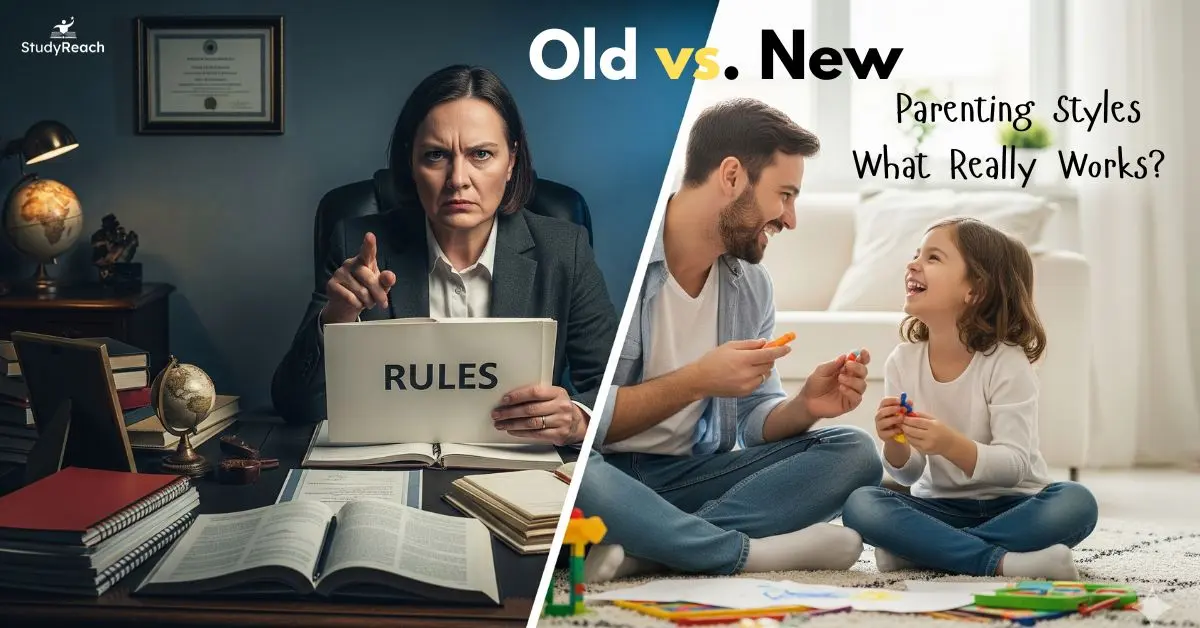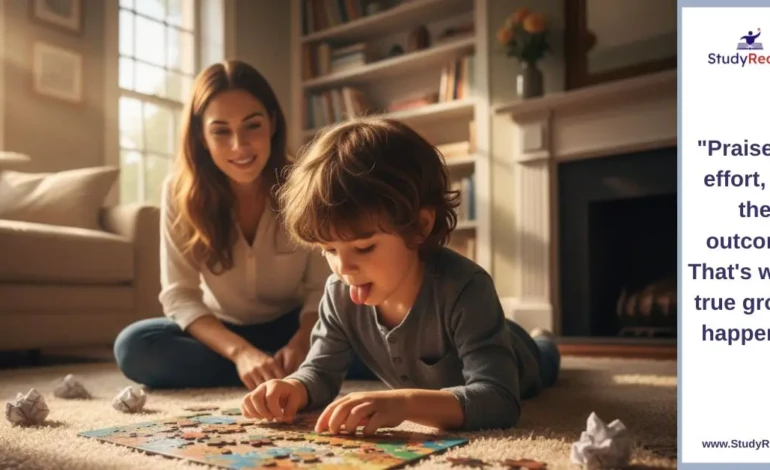
Parenting has evolved from discipline-based methods to modern, child-centered approaches. In this article, we compare old vs. new parenting styles, share real-life examples, and suggest a balanced approach that helps children grow into responsible yet happy individuals.
Table of Contents
Parenting is not an easy journey, right? Sometimes we wonder if we are being too strict, and other times we feel guilty for being too soft. Over the years, parenting has changed drastically.
Our parents — and their parents before them — believed in discipline, rules, and respect. Today, many of us are told to be “cool parents” — friendly, flexible, and always understanding.
But here’s the real question: Which parenting style actually works? Let’s walk through the old vs. new ways of parenting, and see where the balance lies.
The Old Parenting Style (Traditional Approach)
If you think back to your own childhood, you might remember:
- Rules were strict. “Study first, play later.”
- Talking back to elders was almost impossible.
- Report cards were a matter of pride — and sometimes fear.
- Parents rarely explained why rules existed. You just had to follow them.
👉 For example: Imagine you failed in a math test. In the old days, most parents would scold you, restrict your playtime, and say: “No excuses, just work harder next time.”
| Strengths of Old Parenting | Weaknesses of Old Parenting |
| Children grew up disciplined and responsible. Respect for elders and culture was deeply ingrained. A sense of duty and hard work was naturally built. | Children often felt unheard or unsupported emotionally. Fear of parents sometimes led to hiding mistakes. Creativity or individuality was often suppressed. |
The New Parenting Style (Modern Approach)
Fast forward to today — things look very different.
- Parents sit down and ask their child’s opinion.
- Emotional wellbeing is considered as important as studies.
- Kids are encouraged to explore hobbies — art, sports, music.
- Parents often try to be “friends” with their children.
👉 For example: If a child fails a math test today, a modern parent might say: “It’s okay, don’t stress. Marks are not everything. Try again next time.”
| Strengths of New Parenting | Weaknesses of New Parenting |
| Children feel loved and supported. They are more confident and independent. Open communication helps them share problems easily. | Too much freedom sometimes leads to lack of discipline. Over-permissiveness can reduce respect for parents. Children may struggle with authority or real-world challenges. |

Old vs New Parenting Styles – What Really Works?What Really Works? The Balanced Approach
So, old parenting was too strict, and new parenting can sometimes be too soft. What actually works is balance — taking the best from both sides.
Imagine parenting as walking on a rope. Too much strictness, and the rope snaps. Too much leniency, and you fall. Balance keeps you steady.
✅ From Old Parenting → Take discipline, respect, and responsibility
✅ From New Parenting → Take emotional support, open communication, and creativity
Balanced Parenting in Action (Examples You’ll Relate To) Old vs New Parenting Styles
👉 Example 1 – Study Time.
- Old style: “Study 4 hours straight, no excuses.”
- New style: “Study whenever you feel like, don’t worry about marks.”
- Balanced style: “Let’s make a timetable — study for 1 hour, then take a short break. I’ll help if you’re stuck.”
👉 Example 2 – Gadgets & Screen Time
- Old style: “No TV or games until exams are over.”
- New style: “Play as much as you want, it’s your choice.”
- Balanced style: “Finish your homework first, then you can enjoy 30 minutes of games.”
👉 Example 3 – Discipline & Respect
- Old style: “Never question elders. Just listen.”
- New style: “Children can decide everything on their own.”
- Balanced style: “Respect elders, but also express your views politely. Discussion is welcome.”
Practical Tips for Balanced Parenting
- Be approachable, but set boundaries.
Your child should feel free to share problems, but also understand limits. - Explain rules, don’t just impose them.
Instead of “Do your homework now!”, try “Homework helps you revise — let’s get it done before playtime.” - Encourage independence, but guide them.
Let children make small decisions (like choosing clothes), while you guide in bigger ones (like career choices). - Praise wisely.
Appreciate efforts, not just results. Say “I’m proud you worked hard” instead of only “Good marks!” - Balance respect with freedom.
Teach kids to value family traditions, but also let them follow modern dreams.

Top 10 Skills Students Must Learn in 2025 for a Bright Future
Remember: Degrees open doors, but skills keep them open.
Related Article : Old Parenting vs New Parenting Style – Mosaic
Responsible parenting: Create memories, not expectations | Austeja Landsbergiene
Final Thoughts
Parenting has no “one-size-fits-all” method. The old style gave us discipline, while the new style gave us freedom. The secret lies in combining both. Old vs. New Parenting Styles
As parents, our goal is not to raise the “perfect” child, but to raise a happy, responsible, and confident human being. And for that, balance is the real key.
Q1. Which parenting style is most effective?
A balanced approach combining discipline with emotional support.
Q2. Is strict parenting harmful?
👉 Too much strictness can create fear and distance. Discipline is good, but not fear.
Q3. What’s the risk of modern parenting?
Over-friendliness may reduce discipline and responsibility in children.
Q4. How do I balance old and new parenting?
Set rules, explain them, listen to your child, and maintain mutual respect.
















1 Comment
Very helpful article